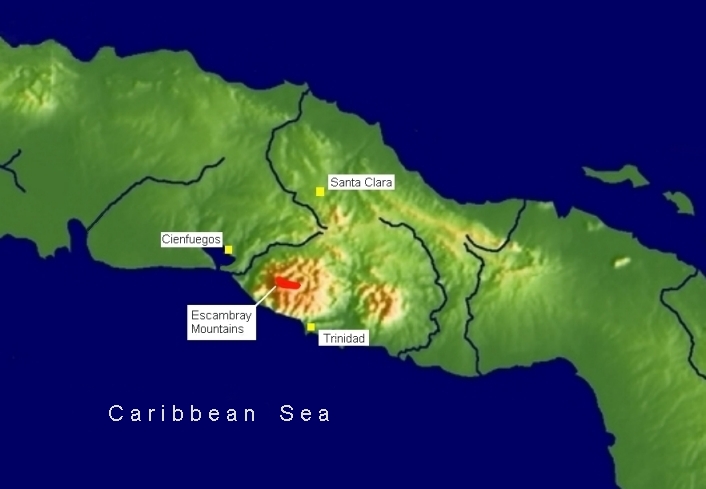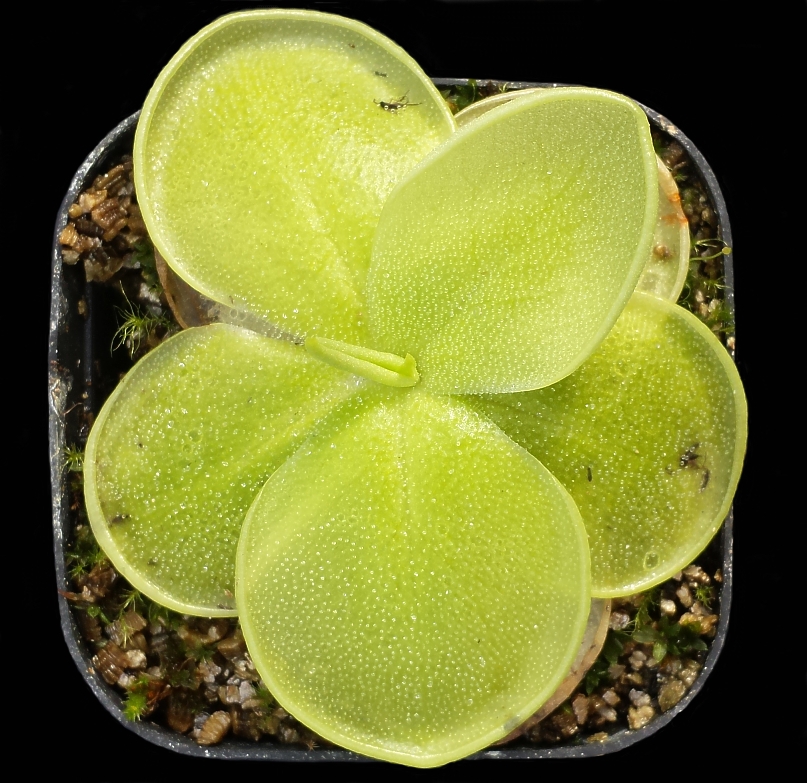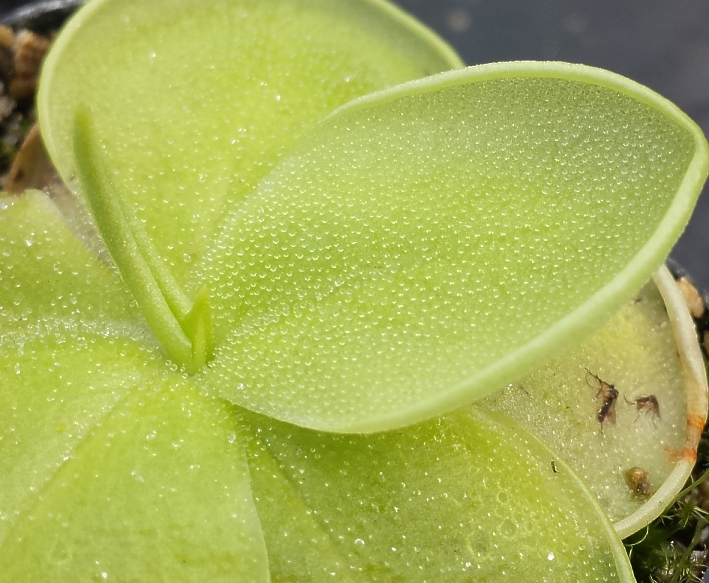
Oliver Gluch's World of Carnivorous Plants or: "What you always wanted to know about butterworts" |
| Impressum |

| Home | Origin | Prey | Species | Plant Purchase | Other Carnivorous Plants | Info about Carnivorous Plants | About me |
Pinguicula jackii Barnhart (1930)In
1928
the American naturalist John George Jack discovered
during one of his botanical travels in Cuba a Pinguicula
population in the Escambray Mountains within the
province of Santa Clara, that was still unknown at that
time and took some herbarium specimen with him. In 1930
the American botanist John Hendley Barnhart
described those specimen as a new species and named it
after the discoverer as Pinguicula jackii.
This secies is endemic to Cuba and is currently only known from very few places in the Escambray mountains. P. jackii grows on shady, permanent wet calcareous cliffs at elevations between 600 and 800 m. The local climate is characterized by a permanent high humidity and by warm day temperatures and cool nights. P.
jackii is probably a perennial species of
tropical-homophyllous growth type. The plants therefore
do form only one set of leaves all year round. The
rosette consists of 5 to 12 leaves, obovate-rotundate to
narrow-cuneate, green to light yellow-green in colour.
The leaves are 3,5 to 5 cm long (there were also
specimen found that had a leaf length of 10 cm)
and 2,5 to 3 cm at its widest point, sometimes even
4 cm. The upper surface of the leaf is densely covered
with sessile and stipitate glandular hairs and the
margin is involute for two third of the leaf.
P.
jackii flowers probably all year round, but
currently only the flowering period between July and Mai
is documented. Per flowering season up to 6 flowers can
be formed, which are borne singly on a flower scape that
can get between 7 and 12 cm in length. The scape is of a
light green colour and is densely covered with stipitate
glandular hairs. Typical for the species is the blue or
blue-violet colour of the corolla lobes that fade
irregularly to white towards the entrance of the corolla
tube. The corolla is bilabiate, but the lobes do not
differ much in size and form. Corolla lobes have
an oblong to obovate shape. Lobes of the upper lip
are up to 1,5 cm and up to 1 cm wide, while the lobes of
the lower lip can get up to 1,5 cm in length and are up
to 1,3 cm wide. The corolla tube is white with purple
parallel running veins, has a broad entrance and a
campanulate form. The tube is between 7 to 11 mm long
and and between 11 and 13 mm at the widest point. The
spur is sub-cylindrical with an obtuse tip, the colour
is white to pale green, up to 7 mm long and is
sporadically covered with stipitate glandular hairs.
Until
date
there is not much knowledge available about long
term cultivation requirements of P. jackii, as
this species is very rare in cultivation. Due to the wet
growing conditions combined with high humidity in
habitat, it is preferable to cultivate the plants under
wet and humid conditions all year round. Roots seem
to be quite susceptible to fungus infection, therefore
the roots should be controlled on a regular base to
check if they still have their white colour. If any
brown root tissue is visible, it should be removed
immediately. Beside higher air humidity plants of P.
jackii do show a better growth when night
temperatures drop significantly. It should be avoided to
cultivate plants with temperatures higher than 30 °C. In
addition plants should be grown under more shady
conditions. As the species doesn't seem to be
self-pollinating (the flower morphology indicates more
that flowers are pollinated by insects), seed can only
be obtained by hand pollination.
|



